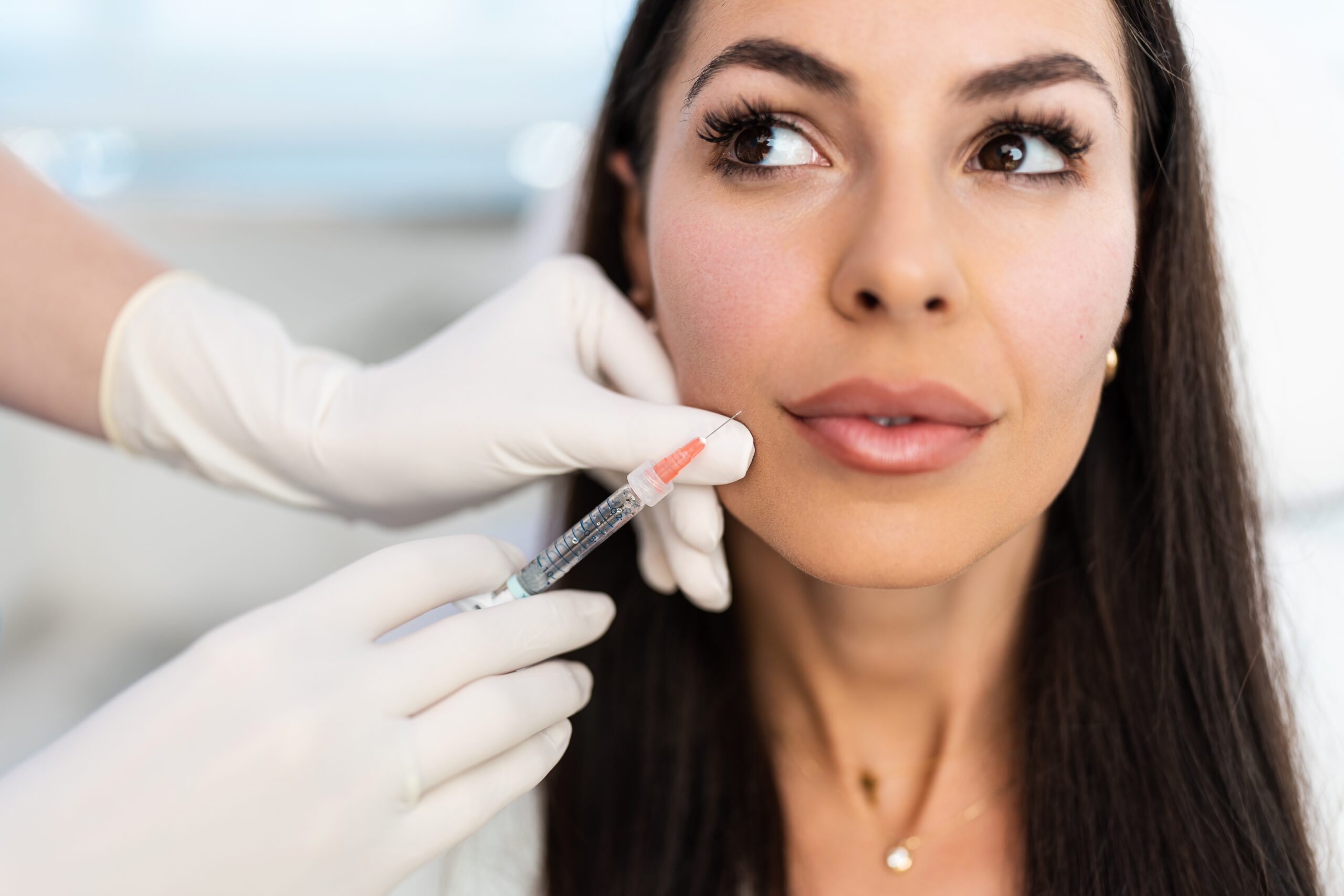Even with the best preventative skincare routine, the fine lines and wrinkles that come with aging arrive eventually.
Thankfully, minimally invasive treatment options are available to reduce the appearance of minor lines and wrinkles and preserve your youthful glow.
Botox and Xeomin injections are two quick, easy, and effective options. They are different brands of drugs made from a bacterium called Clostridium botulinum used to treat various health problems. Here’s everything you need to know about these injections and how they can help you address fine lines and wrinkles from aging.
What Is Botox?
Botox is one brand of botulinum toxin Type A injection. It works effectively to relax your muscles in areas where it is injected. It blocks the chemical signals from your nerves, temporarily relaxing your facial muscles and smoothing out fine lines and wrinkles.
In addition to smoothing facial wrinkles and lines to give you a more youthful appearance, Botox can also be used to treat other health and aesthetic problems, including:
- Muscle contractions
- Severe underarm sweating
- Uncontrollable blinking
- Chronic migraines
- Misaligned eyes
- Overactive bladder
When used to correct fine lines and wrinkles, Botox injections start working within a week; they generally last for three to four months. Your doctor will determine the precise dosage based on your needs, but your treatment may involve several injections in different areas. You will need to return for further injections as the effect wears off.
Your body might produce an immune response and reduce the effectiveness of the treatment — meaning you will need increasing dosages of Botox as time goes on in order to maintain your skincare goals.
In general, side effects from Botox are temporary. They may include pain, swelling, bruising, or redness at the injection sites. You may also experience some itching or bleeding. Some other possible side effects include facial weakness or drooping, headaches, and flu-like symptoms.
Since Botox is derived from a toxin that leads to a type of food poisoning called botulism, there are some risks associated with using it. Botox can also interact with other over-the-counter and prescription medications.
The risks associated with Botox are generally from using it for off-label reasons, so always consult your healthcare provider about the best options for you. Side effects and risks are minimal when administered by a doctor.
The procedure itself is usually quick and easy. Before beginning the injections, your doctor might numb your skin with topical anesthesia or ice. Your doctor will use a thin needle to inject Botox into different areas based on your skincare goals. Depending on your skincare needs, the number of injections and areas treated may change with future sessions.
You should avoid rubbing or massaging these areas for at least 24 hours to prevent the toxin from spreading to other parts of your body.
Usually, you will be cleared to resume normal day-to-day activities after the procedure when used for cosmetic purposes.
The average cost of Botox treatment is $10 to $15 per unit injection. A treatment session may require as many as 30 to 40 units, so you should plan for anywhere from $300 to $600.
What Is Xeomin?
Like Botox, Xeomin is derived from the bacterium Clostridium botulinum. It is usually used for correcting fine lines and wrinkles, known as frown lines, just like Botox.
Some of the complex proteins that are commonly associated with botulinum toxin products are removed from Xeomin during the manufacturing process. This makes it a more pure form and can reduce the potential for the immune response that can be seen with Botox.
Your body will not build up a resistance to Xeomin, so your dosage should remain consistent and your results the same across all treatments.
Depending on what Xeomin is used to treat, some side effects you might experience include dry eyes, vision problems, dry mouth, headache, sagging eyelids, difficulty breathing, and diarrhea. You might develop neck or muscle pain or have difficulty swallowing or speaking.
The procedure for injecting Xeomin is just as easy as injecting Botox. You can expect your doctor to offer topical anesthesia or ice to numb the area, followed by several injections in targeted areas of your face to address fine lines and wrinkles.
The cost of Xeomin treatment is similar to Botox, and sometimes can be less expensive at around $10 to $12 per unit.
Xeomin vs. Botox
Xeomin and Botox treat similar conditions, particularly fine lines and wrinkles from aging.
The key difference between the two options is that Xeomin is a pure form while Botox contains additives, which means you will need more Botox doses over time to achieve the same results.
Xeomin also does not spread as far as Botox when injected, which means that it will carry a smaller risk of spreading the toxin and can create a more targeted treatment in an area that needs more attention.
Learn More About Xeomin vs. Botox
Botox and Xeomin injections are generally very safe treatment options for addressing fine lines and wrinkles from aging. The procedure is easy and painless and should be performed by a doctor. Always consult your healthcare provider to determine if Botox or Xeomin is the right treatment option for you, how many injections you will need, and what areas will be best to treat.
My Filler Treatment can help you stay informed on the various fillers and neurotoxins available, so you can be confident about the right treatment when visiting your local injector.






